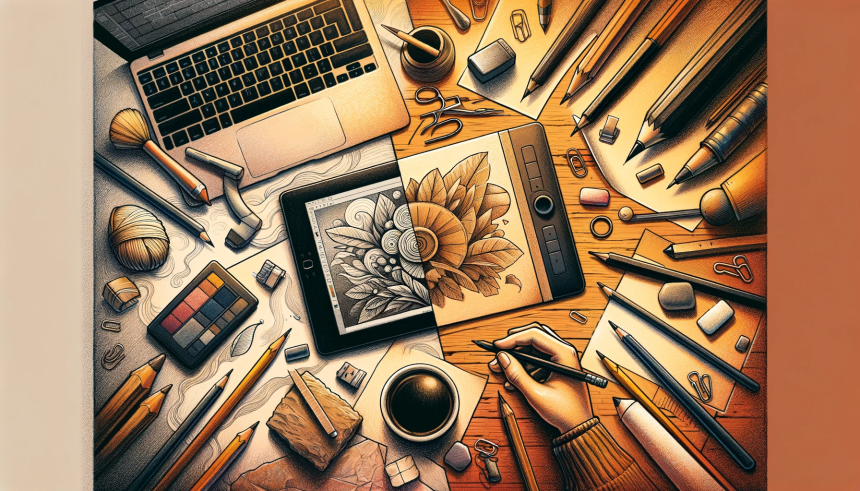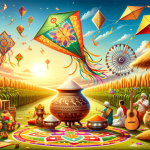An Elegiac Tribute to Digital Sketching in the Modern Era
Amidst a time characterized by the prevalence of pixels and digital surfaces in the visual realm, the enduring appeal of sketching with basic instruments such as a pencil and paper remains. Art, a continuously changing manifestation of human creativity, has progressed from the rudimentary markings on cave walls to the sophisticated computerized works of art that exist in the present era. However, in the middle of this technological transformation, the captivating art of sketching still entices with its authentic allure and tangible warmth.
Hand-drawn artistry continues to have a lasting impact.
Sketching, a fundamental manifestation of unrefined ingenuity, continues to be a crucial foundation in the expansive realm of art and design. This ancient artistic expression acts as the initial element in creating a complex and vivid visual representation, providing a direct channel from the imagination to the physical realm. Although advanced digital tablets and software attempt to replicate the intricacies of old techniques, they fail to fully capture the profound bond formed between the artist, their tools, and the canvas.
The Ethereal Enchantment of Graphite on Parchment
Sketching is not only the act of drawing marks but rather a dynamic interplay of thinking and movement, where each stroke carries the artist’s deliberate intention and vitality. The application of force exerted by the pencil, the tactile qualities of the paper, and the impromptu modifications made during the artistic process all contribute to the creation of a distinctive artistic style that is difficult to reproduce in the clinical accuracy of digital mediums. The act of physically interacting with the material cultivates a unique closeness, a conversation between the artist and the artwork—that is essential to conventional sketching.
Traditional sketching offers unparalleled freedom and creativity.
Sketching on paper epitomizes the core of artistic liberty, providing an unlimited arena for the imagination. It promotes a stream-of-consciousness methodology, allowing ideas to freely and naturally transform from one state to another. The fluidity and spontaneity, which are crucial in the origin of innovative ideas, are frequently limited by the prevailing culture of digital production, where the constant availability of the ‘Ctrl+Z’ function allows for immediate erasure of any perceived imperfections, thereby instilling a fear of making mistakes.
Developing the Artist’s Visual Perception Through Observation
Sketching enhances the artist’s ability to perceive, enabling them to accurately capture the fundamental qualities of the subject with keen precision. The careful and detailed observation, which is a fundamental aspect of drawing from real-life subjects, enhances the artist’s repertoire of visual elements, enhancing their comprehension of shape, viewpoint, and illumination. Engaging in the physical process of drawing from real-life subjects provides valuable insights that go beyond simply looking at digital images, fostering a deep understanding and admiration for the intricate details of the visual world.
The Artistic Harmony of Sketching
In addition to the visual aspect, drawing involves a multitude of senses: the tactile sensation of the paper’s texture, the auditory perception of the pencil’s cadence, and the visual observation of shadows taking form through delicate strokes. These sensory encounters enhance the artistic process, infusing each artwork with a tangible essence that evokes a profound emotional response. The incorporation of several senses, which is sometimes lacking in digital creation, enhances the depth of significance and emotional attachment to the artistic piece.
Embracing the Digital While Retaining the Fundamentals
Although the digital sphere provides exceptional opportunities for the invention and spreading of information, it functions as an expansion of conventional creative forms rather than a substitute for them. The accessibility and adaptability of digital tools have made art creation more accessible to a wider audience, yet the fundamental skills developed through traditional sketching continue to be extremely valuable. The mutually beneficial link between the traditional practice of drawing and the vast possibilities offered by digital creativity signifies a new era in creative discovery, where traditional and modern techniques combine to broaden the boundaries of artistic expression.
Epilogue: Sketching: The Enduring Source of Creativity
Amidst the rapid advancement of technology, the act of sketching remains a symbol of genuine and individualistic self-expression. This evokes the inherent pleasure of bringing something into existence, emphasizes the significance of fundamental abilities, and highlights the deep interrelation between manual dexterity, emotions, and intellect. The future of art is at the intersection of conventional sketching and digital innovation, offering a vast canvas of potential that is firmly rooted in the enduring values of observation, inquiry, and expression.








